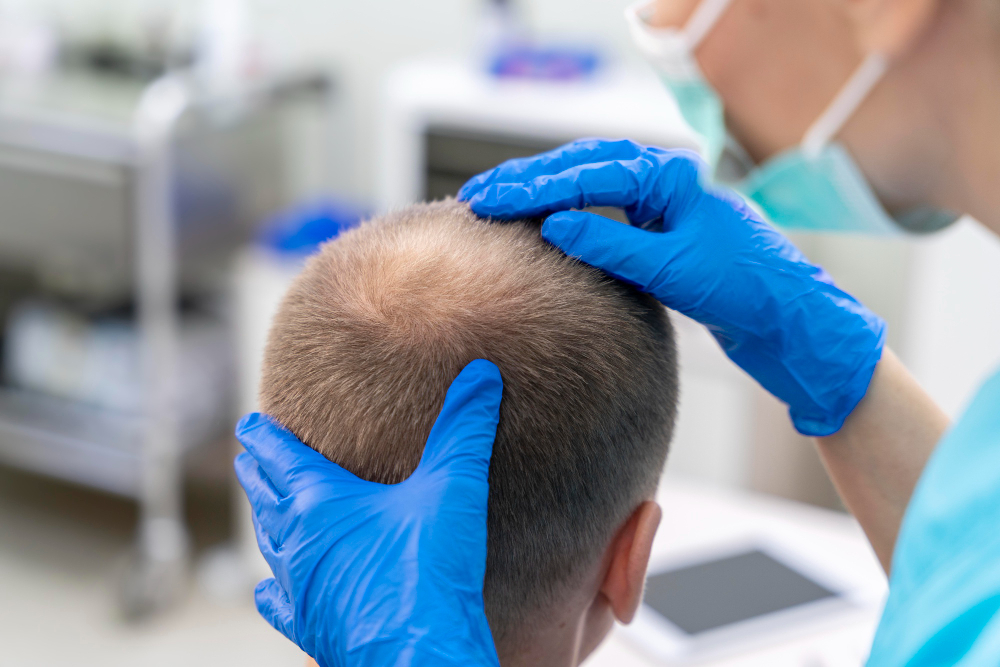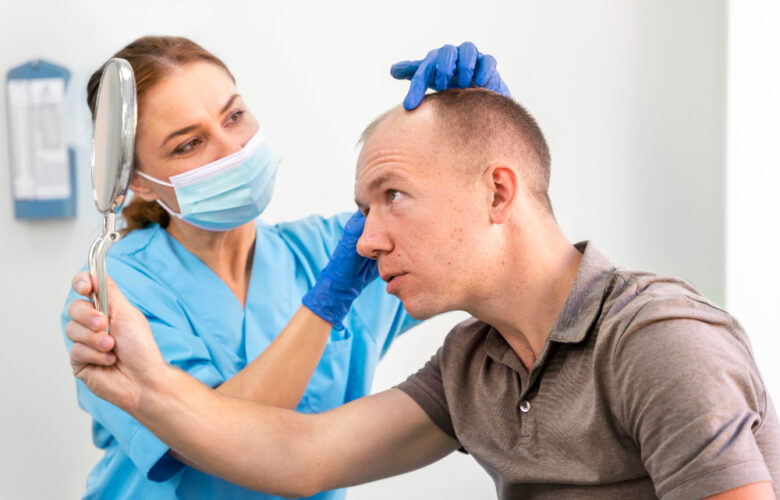Hair transplant surgery is a surgical procedure that moves healthy hair follicles from areas of thick growth to bald or thinning areas. It can be performed on men or women.
It is essential to follow your doctor’s instructions after the surgery. This will increase your chances of success.
You may notice small scabs on your scalp after the surgery. These will usually heal within a few days.
Procedure
Hair transplant surgery involves transferring hair follicles from a part of the head with dense hair (the donor site) to a bald or thinning area (the recipient site). This procedure can treat both male and female pattern baldness.
To prepare for the hair transplant surgery, your doctor may trim your existing hair and apply local anesthesia to the scalp. Once your scalp is numb, they will create tiny incisions to receive the grafts. The length and breadth of your repair will determine how many incisions are necessary.
Your doctor can use different graft sizes to achieve the desired result, including punch grafts that are round and contain one to three hairs; mini-grafts that are square and have two to five strands; strip grafts that are long and thin and include 30-40 coats; and micro-grafts that are tiny and have one to two inches. Your surgeon will then move the grafts to the recipient sites.
The transplanted follicles will often fall out within a few weeks but regrow after some time. During this time, your doctor will recommend medications like minoxidil or finasteride to stimulate hair growth and prevent future baldness. Most patients expect to see their new hair growth within a few months after the surgery. However, it might take a year to see results fully.
Recovery
Today’s hair transplant procedures are far more effective, less painful, and require much less recovery time than they used to. But it’s still essential to know what to expect during recovery.
Remember that you will likely see scabbing on the donor site where the follicles were harvested and the area of your scalp where the grafts were placed. This is common and should heal within a few days. It is also customary to experience some numbness or tingling in the scalp. These symptoms usually disappear within several weeks.
Once the scabs have healed, you can wash your hair as usual. But it is an excellent choice to avoid using hair products that contain alcohol as these can kill the new follicles. It would also help you if you ate a diet high in protein to promote hair growth.
For the first two months after the surgery, your new follicles will go into a dormant state. This is common, and it will not affect the results of your transplant. Then, at month three, the bristles will wake up and grow hair. It might take up to a year for the transplanted follicles to reach their final size and begin to produce healthy, thick hair. Following your doctor’s instructions for post-operation care is essential to ensure the follicles heal properly and quickly.
Results

For several weeks after a hair transplant, it’s typical for much of your new hair to shed. This is because a transplanted hair follicle becomes temporarily starved of blood as it relocates to its new site on your scalp. Eventually, the transplanted hair will grow again, and it should look much fuller than before.
Sometimes, your surgeon may recommend a hair restoration procedure called flap surgery. In this method, the surgeon makes superficial cuts around three sides of your scalp’s donor area but leaves the fourth side attached to maintain its original blood supply. The surgeon then uses a tool shaped like a balloon to gradually expand the skin, which can be lifted and covered over bald areas.
Your doctor can also use body hair (usually from the back or side of your head) to help cover balding areas. The body’s hair is generally a darker color than yours, and it can provide good coverage for bald spots that don’t respond to other treatments. Your doctor may also prescribe hair growth medications to improve regrowth and slow down future hair loss. You should see some improvement in your hair growth about eight months after your surgery. Some patients, however, need more than 12 months for results to appear.
Cost
Many factors affect the cost of hair transplant surgery, including the surgeon’s experience, location, and whether you require a local or general anesthetic. It is also important to consider travel costs, as these can be significant if you seek treatment abroad.
Speaking with a few surgeons before deciding is a good idea, as prices vary significantly. It will help if you ask about additional costs, such as medications or follow-up care. It is also essential to consider possible complications requiring further treatments or hospitalization.
The most common hair loss surgeries are follicular unit transplantation (FUT) and follicular unit extraction (FUE). FUT is more expensive than FUE because it requires more time from the doctor, but both methods are considered safe and effective.
Another factor that cost is the grafts required to achieve your desired result. You will need more grafts to cover a wider area or have larger bald patches.
A good doctor should outline your grafting session(s) and recovery period, which will help you understand the overall cost. They can also answer all questions about the procedure and its risks. It’s also great to avoid smoking and taking aspirin or other blood thinners in the weeks before the process, as they can cause bleeding and increase your risk of complications.
Featured Image by Freepik
